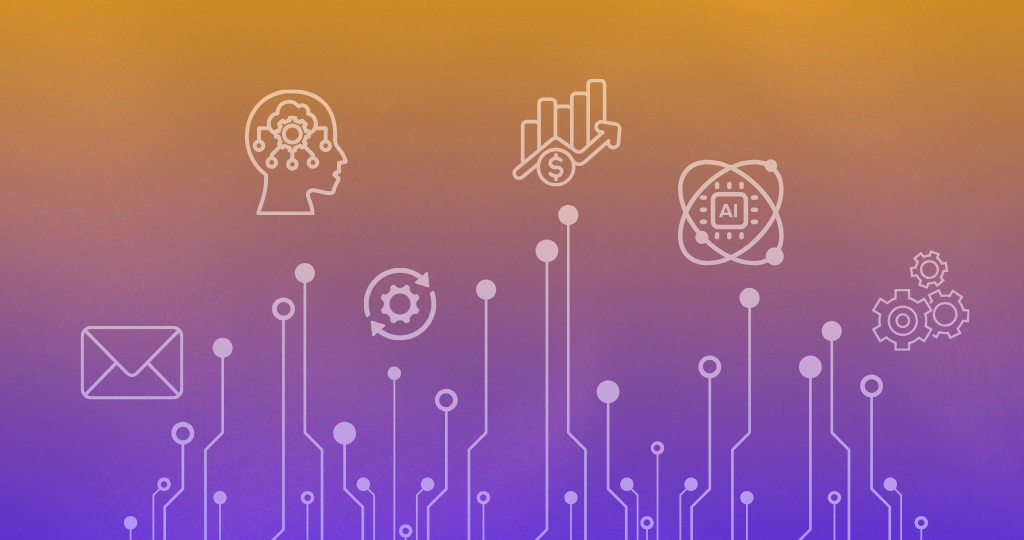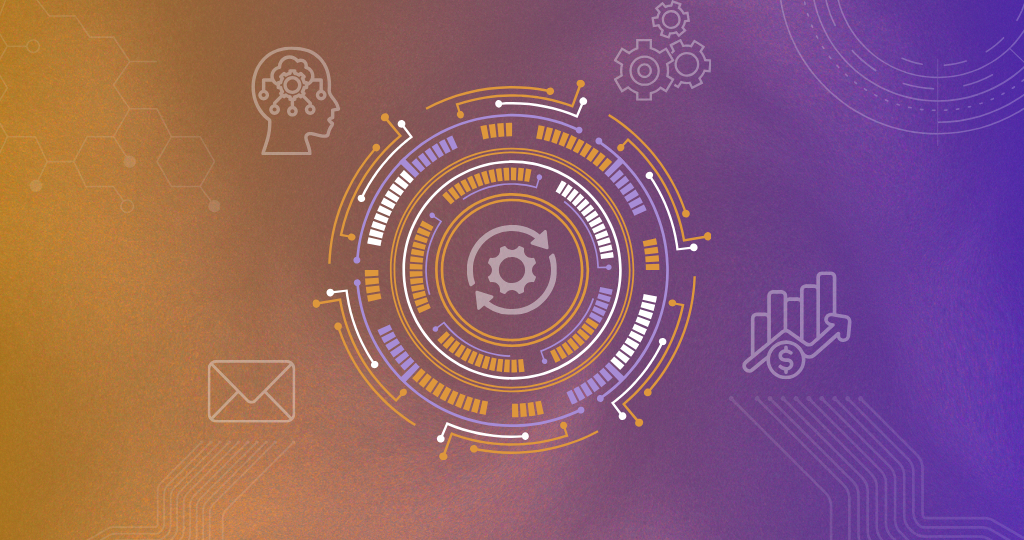What is the buyer's persona and the buyer's journey?
According to HubSpot, a Buyer’s Persona is a semi-fictional representation of your ideal customer. A Buyer Persona is partly based on facts, such as Demographics and Job position. But a Buyer Persona is also partially based on intuition and guesswork. Things such as: “What issues are my clients to solve?” and “What newspaper would my Buyer Persona read?”.
What is a Buyer's Persona?
A Buyer Persona will help your business more specifically target leads and prospects. Without a Buyer Persona, your lead nurturing campaign will be like flying blind. You will be unable to effectively attract the right leads to make your business a success.
The Buyer Persona is important because there is a lot of noise online. Many people are trying to gain the attention of online users. This means that being able to stand out is incredibly important. That’s why a Buyer Persona will help.
Simply creating a brief overview of your Buyer Persona and not actually talking to existing customers is not going to help. It is important to talk to your current customers and make sure you capture their information accurately as well.
Talking to existing customers is one of your most effective ways to get accurate and detailed information. Think of asking questions such as:
- What made you decide to go with us?
- What challenges did you overcome after using our product?
- How did you hear about us?
- Were you the main person in doing research when you found us? If no, who did the research?
- Which 3 words would you have used to describe our company when you were comparing us?
- Which concerns did you have when you decided to buy from us? (If you had any)
- What could help us improve? Whether it is finding out more about us, our onboarding process or service after the purchase?
- What could we do to reach more people like yourself?
By answering these questions, you can have more of an understanding of why your current customers are working with you. What made them stay with you and what you can do to keep the client happy.
Answers to these questions will help enable you to create an as accurate Buyer Persona as you possibly can.
Creating the ideal Buyer Persona
Apart from talking to existing clients it is also important to reach out to possible clients that you think perfectly match your Buyer Persona. Reaching out to possible customers, or people who you think might want to work with your business.
When starting to think about the Buyer Persona, make sure that you first look at your database. Do some research on the demographics on your existing customers. Use this information to start looking at what your Buyer Persona might look like.
When trying to create your Buyer Persona, first go after the factual information.
- Demographic Information
- Age
- Income
- Education
- Married or not
- Do they have kids
- Location
- Industry they work in
- Job Role/title
- Describe the career Path.
- Business Information
- Business Size
- What do they do in a day?
- What tools do you use for your work? E.g. MailChimp
- Who do you report to? Who reports to you?
- What industry does your business work for?
- Personal Information
- What blogs do you read?
- How do you learn things on your job? Do you get training; do you read blogs?
- What associations and social media networks do you engage with?
- How do you prefer to interact with businesses (email, phone, in person?)
- Do you use the internet to research vendors or not? If yes, how do you search for the information?
- Describe a recent purchase. Why did you consider that purchase? What was the evaluation process like? How did you decide to purchase that specific product or service?
When asking these questions. It is important to keep asking “why”. If they say that they use a heatmap tool to see customer behaviour on their website. Make sure to ask, “why do you do that?”
Maybe they do it because they need to report to their manager. Maybe they do it to convince their manager they need a website redesign. Or perhaps they do it because they love A/B testing changes.
All of these questions and the answers to these questions will help you understand your Buyer Persona better. You need to understand the reasoning behind their choices. Not just that they chose that option.
Of course, you have limited time available and you would like to know how many people you need to interview. There isn’t an easy answer for this, however. A general rule of thumb is to start with 3 to 5 interviews. Then go from there.
There will be a point where you can predict the answers the interviewee will give. When you are able to answer every question in your head before the interviewee has a chance to answer the question then you know your Persona well enough.
When starting to ask more serious questions rather than just basic Demographics information. Start off with a very insightful question. We love starting with “what do you do in a day?” This question will help you understand your persona better.
If they say that they start their day reading a few blog articles. Ask them why. You want to know the deeper meaning behind the action's interviewees do. By knowing these deeper meanings, you can target more specifically.
Aside from answering questions and having surveys it is also important to do your own research. If you have an already established business, you can find out a lot of information from the following places:
- Facebook Insights
- Twitter Insights
- Instagram Insights
- CRM Database
If you don’t have an established business, you can also look at competitors and see who is engaging and interacting with their posts. By looking at the social media of competitors you can learn a lot about the audience that would possibly be interested in your product.
This research can be done by using tools such as similarweb or SemRush. These tools allow you to analyse how traffic is coming to websites. Similarweb also allows you to see the demographics of website visitors, depending on the plan you have.
We also recommend going to the most popular channels of competitors and seeing who engages the most with their brand. This lets you see who is genuinely interested in the business.
Building your Buyer Persona
After you have done your interviews and know the answers to the questions your interviewees will give, it is time to start creating your Buyer Persona. This is the part of the process that will help you make this person really come to life.
When making a Buyer Persona, make sure to use an alliteration for the name. It helps it stick. Examples can be:
- Shopping Sammy
- Studying Susy
- Accounting Adam
These names all have a good ring to them and make sure that your sales and marketing team will remember the Buyer Persona.
When making your Buyer Persona’s, we use the HubSpot Template that can be downloaded here. However, you can also create tables in Google Docs or Microsoft Word and use that.
Buyer's Journey
The Buyer’s Journey is the steps that a prospect goes through to find out more about your business, and in the end, purchase your products.
The importance of the Buyer’s Journey can’t be overstated. Knowing how your customers eventually end up buying your product will help you market more effectively. It stops you from spending money on channels that your users aren’t on.
Rather than spending money on LinkedIn Ads, if you know your audience only spends time on Facebook and Instagram, you can target prospects there.
It is important to make a visual representation of the Buyer’s Journey. By creating a visual aid, you will be able to more accurately see the points where your prospects are coming from. This will make you able to map your Sales Funnel.
Try to make your Buyer’s Journey in different stages of the sales Funnel. Figuring out how the information your prospect consumes fits in with your Sales Funnel and Buyer’s Journey is incredibly important.
Each stage of the Buyer’s Journey will have a different type of content that is required.
Sales Funnel
The Buyer’s Journey is important when it comes to the Sales Funnel. It helps to visualise this process and helps you understand the importance of having many people at the top of the funnel.
The sales funnel will help you understand how the Buyer’s Journey is going to go. One of the important aspects to know is that, especially with a digital world like ours, the places people enter the Sales Funnel has changed.
More and more prospects do their own research before even starting to look for a solution. Businesses need to have content online to be able to assist in the research. If you are a source of truth for prospects, then they are more likely to do business with you.
Of course, a business must still attract people at the Top of the Funnel because otherwise the funnel is going to dry out. However, as mentioned above there will be people that join in the Middle of the Funnel. There will even be people coming at the Bottom of the Funnel and there also needs to be content there.
Flywheel Methodology
The flywheel model is a great way to make the sales funnel stay alive and active. It also provides you with content for every stage of the sales funnel. Meaning that there is appropriate content for Top of the Funnel, Middle of the Funnel and Bottom of the Funnel.
By making sure that your content is aligned with every part of the sales funnel and Buyer’s Journey you will attract more leads. These leads will also be more qualified and because of marketing automation, you will even have more information on this client than ever before.
Making sure that you understand the Buyer’s Journey is what will make the Flywheel keep spinning. Having the right content at the right stages means that you will attract more qualified leads.
When you are mapping the Buyer’s Journey. Make sure that you also write down which part of the Flywheel Methodology it comes in touch with.
- Are users that are looking for reviews on Facebook in the Attract or the Engage phase?
- How is your Buyer’s Journey going to help with the Delight phase?
- How is our content going to help in different stages of the Buyer’s Journey?
Conclusion
The Buyer Persona and the Buyer Journey are critical to the success of a good marketing campaign. It prevents you from spending money on channels that your audience is not on. By researching your competitors and seeing what works for them you can gain a lot of insights
If you already have a business, try looking at your demographics on Social Media to see who is engaging with your content.
Once you have a grasp of the demographics of your Buyer Persona, start interviewing people that fit within that group. When you know what answers your questions will get, that is when you have your Buyer Persona down pat.
A Buyer’s Journey will be answered by questions in the Buyer Persona interview, but make sure that you write content that fits with each stage of the Buyer’s Journey. By writing content for each stage of the Buyer’s Journey your flywheel will spin and your business will start rolling.
Also a tool like HubSpot will be able to help with building out your Persona's
From the blog


